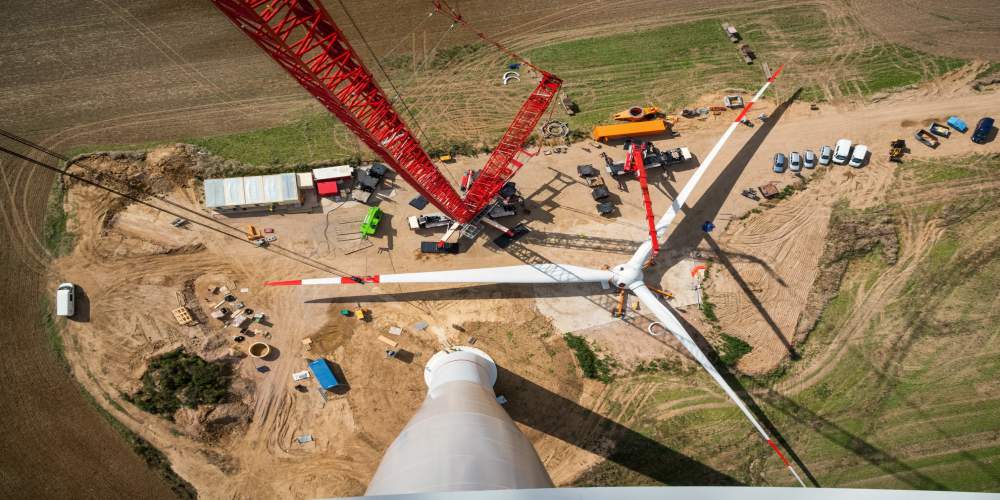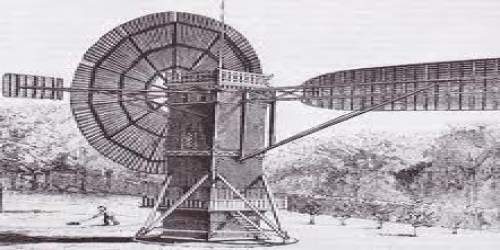Read Time : 3 Minutes
How much is a Wind Turbine likely to make me and over what period?
How Much Profit Will I Make From a Wind Turbine?
As with other renewable technologies, wind turbines are eligible for the Feed in Tariff which means that you can sell your excess electricity production to the grid. Whether you make any profit on your wind turbine energy production will depend on a wide range of factors, including:
- The size and potential output of your wind turbine.
- Its height – the general rule of thumb, up to certain limits, is that you should get a 1% increase in power generation for every meter.
- The quality of the turbine components, initial installation costs and ongoing maintenance needs.
- The wind speed that your site generally gets.
- Distance from obstructions that could affect the wind flow, such as houses, trees or hills.
- Height above sea level may also be another factor that you need to consider.
- The Feed in Tariff the turbine qualifies for.
- Your own energy usage and how much excess you will be able to export to the grid.
COMPARE PRICES FROM LOCAL INSTALLERS
Compare prices from local companies fast & free
Enter your postcode to compare quotes from leading professionals. We promise to keep your information Safe & Secure. Privacy Policy
| System size | Indicative system cost (incl. VAT @ 5%) | Approx. yearly system output* | Estimated first year FiT income bill savings** | Average break-even point | Income over 20 years*** |
|---|---|---|---|---|---|
| 1.5kW | £7,000 | 2,600kWh | £479.83 | 14 years, 6 months | £9,596.60 |
| 2.5kW | £12,500 | 4,400kWh | £677.02 | 18 years, 5 months | £13,540.40 |
| 5kW | £23,500 | 8,900kWh | £1,304.99 | 18 years, 0 months | £26,099.80 |
| 10kW | £45,000 | 21,500kWh | £3,000.32 | 14 years, 11 months | £60,006.40 |
| 15kW | £70,000 | 36,000kWh | £4,618.80 | 15 years, 1 month | £92,376.76 |
*We have assumed the average UK wind speed of 5.6m/s for the purposes of these estimates. Actual system output is predicated upon the range of factors outlined above. Higher output turbines also tend to be mounted at greater heights, where wind speeds are higher.
** Assuming a 50% export/50% usage rate for systems up to 5k, 20% export rate for a 10kW system, and 12.5% for a 15kW system.
*** Figures shown exclude inflation and have been worked out to give the minimum expected yeald so as to not provide misleading figures. An onsite survey over a period of time would more accurately provide an average wind sppeed measurement that would be closer to your atual expected ROI figures.
One of the main advantages of wind power over solar is that it produces power both day and night and is more profitable over the winter months when winds are traditionally higher. This is particularly valuable if you have installed a larger turbine system for commercial purposes.
Commercial Wind Turbines
The difference between domestic and commercial wind turbines is that the latter tend to be bigger and generate more energy. A larger array may mean a lower Feed in Tariff but it also means more electricity production. For example, a 20 kW wind turbine subject to an average wind speed of 6.9 metres per second, would cost around £90,000. The expected Feed in Tariff would be nearly £4,000 a year with a savings on energy bills of £4,800 and export tariff of £1,800. That would guarantee annual earnings and savings of over £10,600. For commercial undertakings you will also have to be aware that profits under the Feed in Tariff would be subject to tax. You may well be able to cover your initial investment within 5 years if conditions remained ideal. The reality, however, is far more complicated than a simple calculation. There are quite wide variations on output and savings dependent on such aspects as the quality of the turbine, the optimum wind speed that it is exposed to and the location chosen to install.
What is the Feed in Tariff?
The Feed in Tariff is a government scheme where you can be paid by the power companies for the energy you produce. Along with lower energy bills, FiTs are one of the main reasons that people consider undertaking a renewable technology such as wind turbines or solar panels. For every kWh of surplus energy that you export back to the grid you are paid a certain amount (see the table below). For domestic residences this is tax free but for commercial premises you will need to pay the appropriate tax rate. The current Feed in Tariffs for wind turbines (October 2014 to March 2015) are as follows:
| Capacity | Feed-in Tariff Rate (p/kWh) |
|---|---|
| 1.5 kW or less | 8.53p/kWh |
| Greater than 1.5 kW but not exceeding 50 kW | 8.53p/kWh |
| Greater than 50 kW but not exceeding 100 kW | 8.53p/kWh |
| Greater than 100 kW but not exceeding 1.5MW | 5.46p/kWh |
| Greater than 1.5 MW | 0.86p/kWh |
Feed in Tariffs are subject to change at regular intervals and new calculations are available on the Ofgem website.
The Feed-in Tariff scheme closed to new applications on 31 March 2019
Renewables Levy Exemption Certificate
Another way for commercial businesses to save some money on their renewables is to apply for a Levy Exemption Certificate. Most businesses now have to pay a tax on the energy they use including electricity, gas, oil and coal. This is called the Climate Change Levy and is charged at £5.24 for each MWh used. If you install a renewable energy system like a wind turbine you can get the exemption certificate, so you don’t have to pay the tax. The Climate Change Levy (CCL) exemption schemes for renewables and combined heat and power (CHP) are closed.
Find a local installer
Welcome to the biggest directory of UK renewable energy companies





 How a Wind Turbine works
How a Wind Turbine works







